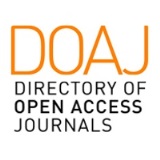Angel Ferrant and the Vienna School of Arts
DOI:
https://doi.org/10.58265/pulso.4989Keywords:
Vienna Art Nouveau, Shape Analysis, Spontaneous Self-Expression, Childhood, Pottery-MakingAbstract
In this article we describe the organization of the Kunstgewerbeschule in Viena and the didactic methodology that it developed from the artistic movement known as Secession, making it in one of the most modern schools in all of Europe. These methods infl uenced the Spanish sculptor and teacher Ángel Ferrant, who visited it in 1927 and later became one of the most innovative art teachers in Spain. During his visit, he was especially impressed by the work of Professor Franz Cizek, a famous specialist in teaching children, and by the work of Sculpture Professor Eugen Steinhof.
Downloads
References
ARCHIVO FERRANT. FERRANT, A. (1931): Diseño de una configuración escolar.
ARCHIVO FERRANT. FERRANT, A. (1933): Cursillo para profesores impartido en Barcelona. Texto utilizado para el Curso Breve de Selección de Profesorado de dibujo en institutos. Documento inédito.
ARCHIVO FERRANT. FERRANT, A. (1936): Proporción y composición. Primera conferencia impartida en el Instituto Cardenal Cisneros, en el Curso Breve de Selección de Profesorado de dibujo en institutos. Documento inédito.
ARCHIVO FERRANT. FERRANT, A. (1936): La escultura, dibujo en el espacio. Segunda conferencia impartida en el Instituto Cardenal Cisneros, en el Curso Breve de Selección de Profesorado de dibujo en institutos. Documento inédito.
ARCHIVO FERRANT. FERRANT, A. (¿?): Pancartas escolares I y II.
ARNALDO, J. Y FERNÁNDEZ, O. (1997): Todo se parece a algo. Escritos críticos y testimonios. Madrid, Visor.
ARNALDO, J. Y BERNÁRDEZ, C. (1998): “Saber empezar sin saber”. En IVAM (ed.). Infancia y arte moderno. Valencia, IVAM, 61-71.
ARNALDO, J. (2001): “Aquí está lo magistral. La alternativa Ángel Ferrant”. Boletín de la Institución Libre de Enseñanza. Segunda Época, 42-43, 181-188.
ARNALDO, J. (2002): “Frank Cizek y la enseñanza artística en España”. Boletín de la Institución Libre de Enseñanza. Segunda Época, 45-46, 157-173.
ASENJO, I. (2004): “Ángel Ferrant y los ideales institucionistas”. Boletín de la Institución Libre de Enseñanza. Segunda Época, 56, 95-108.
CIZEK, F. (1927): Children’s coloured paper work by Franz Cizek, professor at the Young People´s Class of the Industrial Art School in Viena. Viena, Anton Schroll & Co.
CSIC. FERRANT, A. (1927): Archivo JAE, expediente 54-258 y F-32. Solicitud de D. Ángel Ferrant Vázquez de una beca a la Junta para la Ampliación de Estudios. Correspondencia.
EFLAND, A. (2002): Una historia de la educación del arte. Tendencias intelectuales y sociales en la enseñanza de las artes visuales. Barcelona, Paidós.
PATKA, E. (1991): Kunst: Anspruch und Gegenstand. Salzburgo, Residenz Verlag.
ROCHOWANSKY, L. W. (1930): Osterreichisches Kunstgewerbe. Viena, Verlag Heinz & Cop.
SMOLA, F. (comisario) y otros (1993): Viena 1900. Catálogo de la Exposición celebrada en el Museo Nacional Centro de Arte Reina Sofía entre el 6 de octubre de 1993 y el 17 de enero de 1994. Madrid, Técnicas Gráficas Forma S.A.
STEINHOF, E. (1937): “Art and society”. Parnassus, 6, 15-19.
VIOLA, W. (1936): Child art and Franz Cizek. Viena, Austrian Junior Red Cross.
Downloads
Published
How to Cite
Issue
Section
License
Copyright (c) 2022 Pulso. Revista de educación

This work is licensed under a Creative Commons Attribution-NonCommercial-NoDerivatives 3.0 Unported License.
This journal offers immediate open access to its content based on the idea that offering readers free access to research favours a global exchange of knowledge.
Papers are published in the electronic version of the journal under a Creative Commons License: Attribution-NonCommercial-No derivatives 4.0 International
Authors are allowed and encouraged to promote the post-print version (reviewed and accepted for publication version) of their work online before publishing them. This favours their earlier circulation and dissemination and thus a possible increase in their citation and reach among the academic community.













